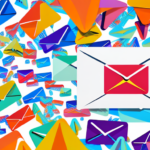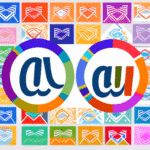How to Craft Effective Ecommerce Emails for Maximum Engagement
Are you struggling to engage your target audience through ecommerce emails? Do you want to improve your email marketing strategy for better conversions? If so, you’ve come to the right place. In this article, we will delve into the key elements you need to consider when crafting effective ecommerce emails for maximum engagement. From understanding the importance of emails to creating visually appealing designs and personalized messages, we will cover everything you need to know to boost your email marketing campaigns.
Understanding the Importance of Ecommerce Emails in Your Marketing Strategy
Before diving into the specifics of creating effective ecommerce emails, it’s crucial to understand the pivotal role that emails play in your overall marketing strategy. Ecommerce emails are a fundamental tool for communicating with your target audience and nurturing your relationship with them. They are effective in driving engagement, increasing conversions, and improving customer retention. According to Campaign Monitor, email marketing can yield an impressive ROI of 4,400%, surpassing any other marketing channel.
One of the key advantages of ecommerce emails is the ability to personalize your communication with customers. By segmenting your email list and tailoring your messages to specific customer groups, you can deliver relevant content and offers that resonate more effectively. This personalization can lead to higher open and click-through rates, as well as increased sales.
Furthermore, ecommerce emails contribute significantly to building brand awareness and loyalty. Consistently providing valuable content and offers to your subscribers helps establish your brand as a trusted authority in your industry. This fosters customer loyalty and advocacy, leading to positive word-of-mouth marketing and sustained business growth.
Essential Elements of a Successful Ecommerce Email
When crafting ecommerce emails, several essential elements must be considered to ensure success:
- Compelling Subject Line: Your subject line should grab the recipient’s attention and encourage them to open the email.
- Clear and Relevant Message: The email body should convey a simple, easy-to-understand message that aligns with the recipient’s interests and needs.
- Single, Clear Call-to-Action (CTA): A concise CTA directs the recipient towards conversion, whether it’s making a purchase or signing up for a newsletter.
In addition to these elements, personalizing your ecommerce emails can significantly boost engagement and conversions. Personalization strategies include addressing the recipient by name, recommending products based on past purchases or browsing history, and sending targeted promotions tailored to their interests and preferences. These tactics help create a stronger connection with your audience, increasing the likelihood of them taking action.
Creating a Targeted Email List for Maximum Engagement
Building a targeted email list is one of the most crucial aspects of effective ecommerce email marketing. Segment your email list based on specific criteria such as purchase history, location, and interests. This allows you to tailor your emails to the recipient’s needs and preferences, enhancing engagement and conversion rates.
Another important factor is the frequency of your emails. Avoid overwhelming subscribers with too many emails, which can lead to unsubscribes or your emails being marked as spam. Conversely, sending too few emails can result in subscribers forgetting about your brand or losing interest. Striking the right balance is key to maintaining a healthy and engaged email list.
Regularly cleaning your email list by removing inactive subscribers or those who have unsubscribed helps keep your list up-to-date, improving email deliverability and engagement rates. Additionally, analyzing email metrics such as open rates and click-through rates provides valuable insights into what’s working and what isn’t, allowing you to refine your email marketing strategy over time.
Crafting a Compelling Subject Line to Drive Open Rates
The subject line of your ecommerce emails is critical for increasing open rates. It should be short, clear, and concise, conveying the value the recipient will receive by opening the email. Personalization is also a powerful technique for boosting open rates. Addressing the recipient by name or referencing their purchase history or location can make the subject line more relevant and engaging.
Another key consideration is to avoid spam trigger words such as "free," "discount," and "limited time offer," which can cause your email to land in the spam folder. Instead, use words that create a sense of urgency or exclusivity, such as "exclusive access" or "limited availability."
Testing different subject lines through A/B testing can help determine which ones perform best. Experiment with various lengths, personalization techniques, and wording to identify what resonates most with your audience.
Personalization Techniques for Your Ecommerce Emails
Personalization is a cornerstone of successful ecommerce emails. Here are several ways to personalize your emails effectively:
- Use the Recipient’s Name: Addressing subscribers by their first name can make your emails feel more personal and engaging.
- Product Recommendations: Suggest products based on the recipient’s past purchases or browsing history to increase relevance and conversion chances.
- Targeted Promotions: Send offers tailored to the recipient’s interests and preferences, enhancing the likelihood of engagement.
Segmenting your email list based on customer behavior or preferences can further enhance personalization. For example, create segments for customers who have abandoned their carts, those who have made recent purchases, or those interested in specific product categories. Sending targeted emails to these segments increases the relevance of your messages, improving engagement and conversion rates.
Choosing the Right Call-to-Action to Drive Conversions
Your call-to-action (CTA) is the most crucial part of your ecommerce email, as it directs the recipient towards conversion. Ensure that your CTA is:
- Clear and Concise: The CTA should communicate exactly what action you want the recipient to take.
- Actionable: Use strong action verbs like "Buy Now" or "Sign Up" to encourage immediate action.
- Prominently Displayed: The CTA should stand out visually and be placed in a prominent position within the email.
However, the effectiveness of your CTA can vary based on the context of your email. For promotional emails, a CTA offering a discount or free shipping may be more effective. In contrast, for newsletters, a CTA encouraging readers to share content on social media might be more appropriate.
Designing Visually-Appealing Ecommerce Emails for Better Engagement
The design of your ecommerce emails plays a significant role in driving engagement and improving conversions. Here are key design principles to follow:
- Clean and Minimalistic: Use a design that aligns with your brand image and avoids clutter, making it easier for recipients to focus on your message.
- High-Quality Images: Include professional product images that showcase your products effectively.
- Mobile Optimization: Ensure your emails are responsive and look great on all devices, especially mobile phones.
Personalization in design can also enhance engagement. Incorporate elements such as the recipient’s name, personalized product recommendations, and exclusive offers based on their browsing history.
Additionally, a clear and prominent CTA is essential. It should stand out visually and encourage recipients to take action, such as making a purchase or visiting your website. Creating a sense of urgency with limited-time offers or highlighting low stock levels can further drive conversions.
Tips for Writing Engaging Copy in Your Ecommerce Emails
The copy in your ecommerce emails should be engaging and persuasive to capture the attention of your audience. Here are some tips:
- Conversational Tone: Write in a friendly, conversational tone that resonates with your target audience.
- Highlight Value: Emphasize the benefits and unique features of your products to showcase their value.
- Use Social Proof: Incorporate customer reviews and ratings to build credibility and trust.
Effective copywriting can significantly enhance the persuasiveness of your emails, encouraging recipients to take the desired action.
Timing is Everything: Best Practices for Sending Ecommerce Emails
Timing is a critical factor in the success of your ecommerce email campaigns. Consider the following best practices:
- Avoid Weekends and Holidays: Most people are busy during weekends and holidays, which can reduce email engagement rates.
- Consider Time Zones: Schedule your emails according to the time zones of your target audience to maximize open rates.
- Use A/B Testing: Experiment with different sending times to determine when your audience is most responsive.
By optimizing the timing of your emails, you can increase the likelihood that your messages are seen and engaged with by your audience.
Measuring the Success of Your Ecommerce Email Marketing Campaigns
Measuring the effectiveness of your ecommerce email campaigns is essential for continuous improvement. Key metrics to track include:
- Open Rates: The percentage of recipients who open your email, indicating the effectiveness of your subject lines.
- Click-Through Rates (CTR): The percentage of recipients who click on links within your email, showing engagement with your content.
- Conversion Rates: The percentage of recipients who take the desired action, such as making a purchase.
- Revenue Generated: The total revenue attributed to each email campaign, providing a direct measure of ROI.
Utilize analytics tools to gain deeper insights into your audience’s behavior and preferences. This data can inform adjustments to your email strategy, ensuring ongoing optimization and improved performance.
Common Mistakes to Avoid in Your Ecommerce Email Campaigns
Avoiding common pitfalls is crucial for the success of your ecommerce email campaigns. Here are some mistakes to watch out for:
- Sending Generic or Irrelevant Emails: Ensure your emails are personalized and relevant to the recipient’s interests.
- Overloading with CTAs: Limit the number of CTAs to avoid confusing or overwhelming the recipient.
- Neglecting Mobile Optimization: Ensure your emails are responsive and look good on all devices.
- Failing to Segment Your Email List: Segmenting allows for more targeted and effective communication.
By steering clear of these common mistakes and adhering to best practices, you can enhance your ecommerce email marketing efforts and achieve higher engagement and conversion rates.
Advanced Strategies for Boosting Engagement and Conversions with Ecommerce Emails
Beyond the basic elements, several advanced strategies can further elevate your ecommerce email campaigns:
- Behavior-Based Personalization: Tailor your emails based on customer behavior, such as browsing habits or previous purchases.
- Triggered Emails: Send automated emails in response to specific actions or events, like cart abandonment or post-purchase follow-ups.
- Dynamic Content: Use dynamic elements to customize email content in real-time based on the recipient’s interactions.
- Artificial Intelligence: Implement AI to optimize email campaigns, including send times, content personalization, and predictive analytics.
These advanced techniques can significantly enhance the effectiveness of your email marketing, driving higher engagement and conversions.
Top Tools and Resources for Creating Effective Ecommerce Emails
Several tools and resources can aid in creating and managing effective ecommerce email campaigns:
- Email Marketing Platforms: Tools like Mailchimp, Constant Contact, and Campaign Monitor offer comprehensive features for designing, sending, and analyzing email campaigns.
- Guides and Tutorials: Resources such as the HubSpot Email Marketing Guide provide in-depth information on email marketing best practices.
- Analytics Tools: Platforms like Google Analytics help track and analyze email performance metrics.
Leveraging these tools and resources can streamline your email marketing efforts, making it easier to create effective campaigns that drive results.
Conclusion
Ecommerce emails are indispensable for driving engagement, increasing conversions, and enhancing customer retention. By understanding and implementing the essential elements discussed in this article—such as creating targeted email lists, crafting compelling subject lines, and designing visually appealing emails—you can significantly improve your email marketing campaigns. Additionally, avoiding common mistakes and incorporating advanced strategies and tools will help you optimize your efforts and stay ahead of the competition. Invest in refining your ecommerce email strategy to achieve maximum engagement and conversions, ensuring sustained growth for your business.




















